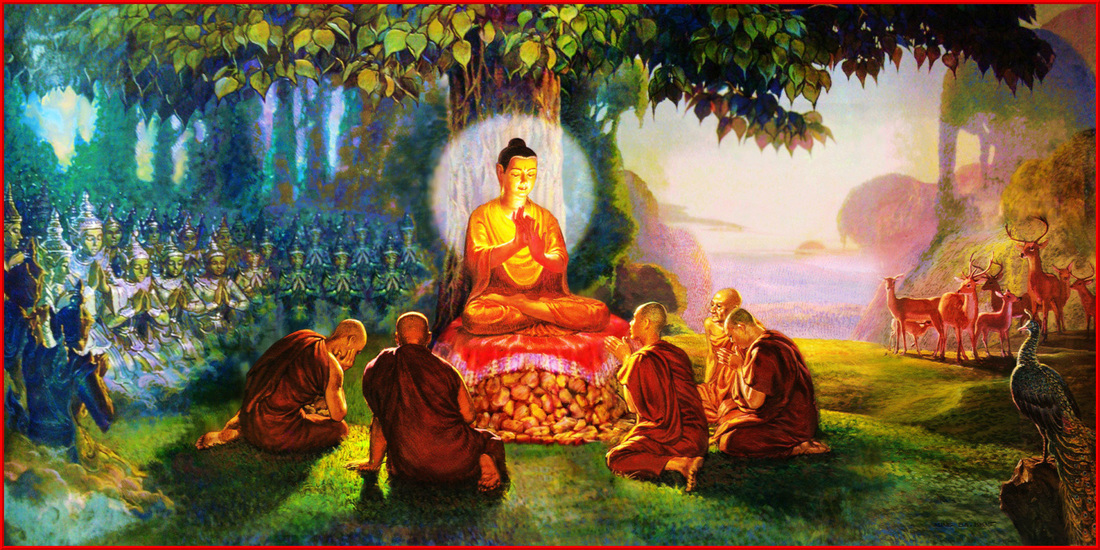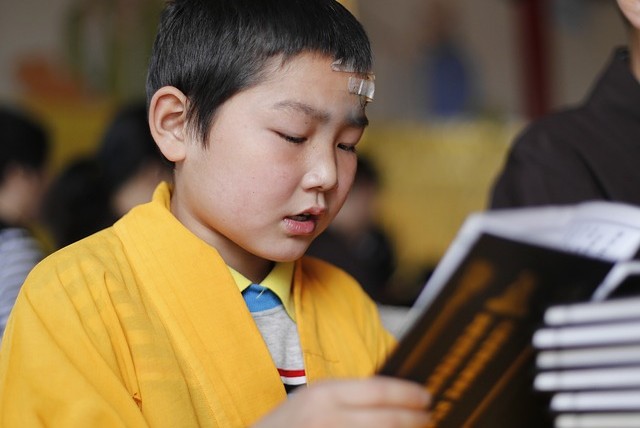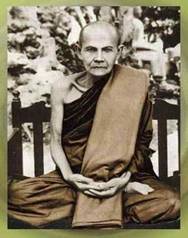Asalha Puja Day is one of the three most important holidays for Buddhists. On that day, the Buddha set into motion the wheel of dhamma. It falls on the full moon of the 8th month of the Indian calendar called Asalha. It happened two months after Buddha attained enlightenment on Vesak Day.
After the Buddha attained enlightenment, he thought about who he could teach? He thought about his two teachers who taught him concentration meditation. Using his divine eye, the Buddha saw they had both passed away. Then he thought of the five ascetics who were his companions when he practiced severe ascetic practices. He saw that they were in Varanasi, at the Isipatana Deer Park. The Buddha walked for two months to see them.
Teaching the five ascetics
The five ascetics saw the Buddha and agreed not to respect him as they thought he had abandoned his ascetic practices. But when he got closer, the Buddha’s aura attracted their attention, and they welcomed him. He told the five ascetics he had reached enlightenment. First, they did not believe the Buddha.
The Buddha asked them three times if he had ever said he attained enlightenment before. The five ascetics realized he never had, and so they began to listen to him.
Dhammachakkappavatthana Sutta
The Dhammachakkappavatthana Sutta teaches mainly the Four Noble Truths. But Buddha began by telling the five ascetics that they must avoid two paths – indulgence in sensual pleasures and self-mortification. He told them they had to find the middle way, which is the Noble Eightfold Path.
A wheel with eight spokes represents the Noble Eightfold Path. The first of the Noble Eightfold Path is right view, followed by right thought – they are the wisdom part. The next three are ethical principles – right action, right speech, and right livelihood. The last three are about the development of concentration – right effort, right mindfulness, and right concentration.
How to use this path? For example, when anger arises, right mindfulness knows there is anger. Right view tells you that this anger is not helpful; whether for yourself or anyone else, it’s unwholesome (akusala). Right thought tells you to let go (nekkhamma), and right effort to replace the anger with wholesome (kusala) thought and to let go of the anger and practice metta. The Noble Eightfold path helps us change unwholesome to wholesome. Whenever unwholesome arises, the wheel of the eightfold path stops. If you apply wholesome activity, you make the right effort to restart the wheel.
The Four Noble Truths
The Buddha then went on with teaching the Four Noble Truths. The First Noble Truth teaches us that there is suffering. Birth is suffering, illness is suffering, aging is suffering, death is suffering. So are pain, sorrow, lamentation, and despair. Association with the unbeloved is suffering. Separation from the beloved is suffering. Not getting what one wants is suffering. Getting what one does not wish for is also suffering.
The five clinging-aggregates are suffering.
The Second Noble Truth is the cause, craving for sensual pleasures, craving for becoming, and non-becoming. The Third Noble Truth is the cessation of suffering. There is a way out of it. The Fourth Noble Truth is the Noble Eightfold Path that will guide us out of suffering.
The first noble truth has to be understood entirely. The second truth has to be abandoned, and the third noble truth is to be experienced. The fourth noble truth, the path, has to be developed.
Importance of the Asalha Puja Day
Another important thing about the Asalha Puja day is the birth of the Sangha. The dhamma was already there. Dhamma is in nature and does not exist dependent on any religious leader. The Buddha was also already there as he reached enlightenment two months before Asalha Puja Day.
On the Asalha Puja Day, Kondanna was the first to understand the Buddha’s teaching and became a Sotapanna (stream-winner). He understood that whatever arises through a cause also ceases through a cause. He understood that suffering arises due to a cause and also ceases from a cause.
The Buddha knew Kondanna understood it and exclaimed, “Kondanna understood it, Kondanna understood it.” Kondanna then asked the Buddha to be allowed to be a monk. He was the first to be ordained by the Buddha with the “Ehi Bhikkhu” ceremony.
Asalha Puja day marked the first turning of the dhamma wheel and was also the birthday of the Sangha.
It says in the Dhammachakkappavatthana Sutta that the earth devas rejoiced at the turning of the dhamma wheel. Devas from Tavatimsa and Tusita heavens, including all the other heavens until up to the highest Brahma realms, all rejoiced. Then the earth shook (earthquake), and lights pervaded the entire cosmos.
This is why Buddhists, including in the West, very much celebrate the Asalha Puja day.



